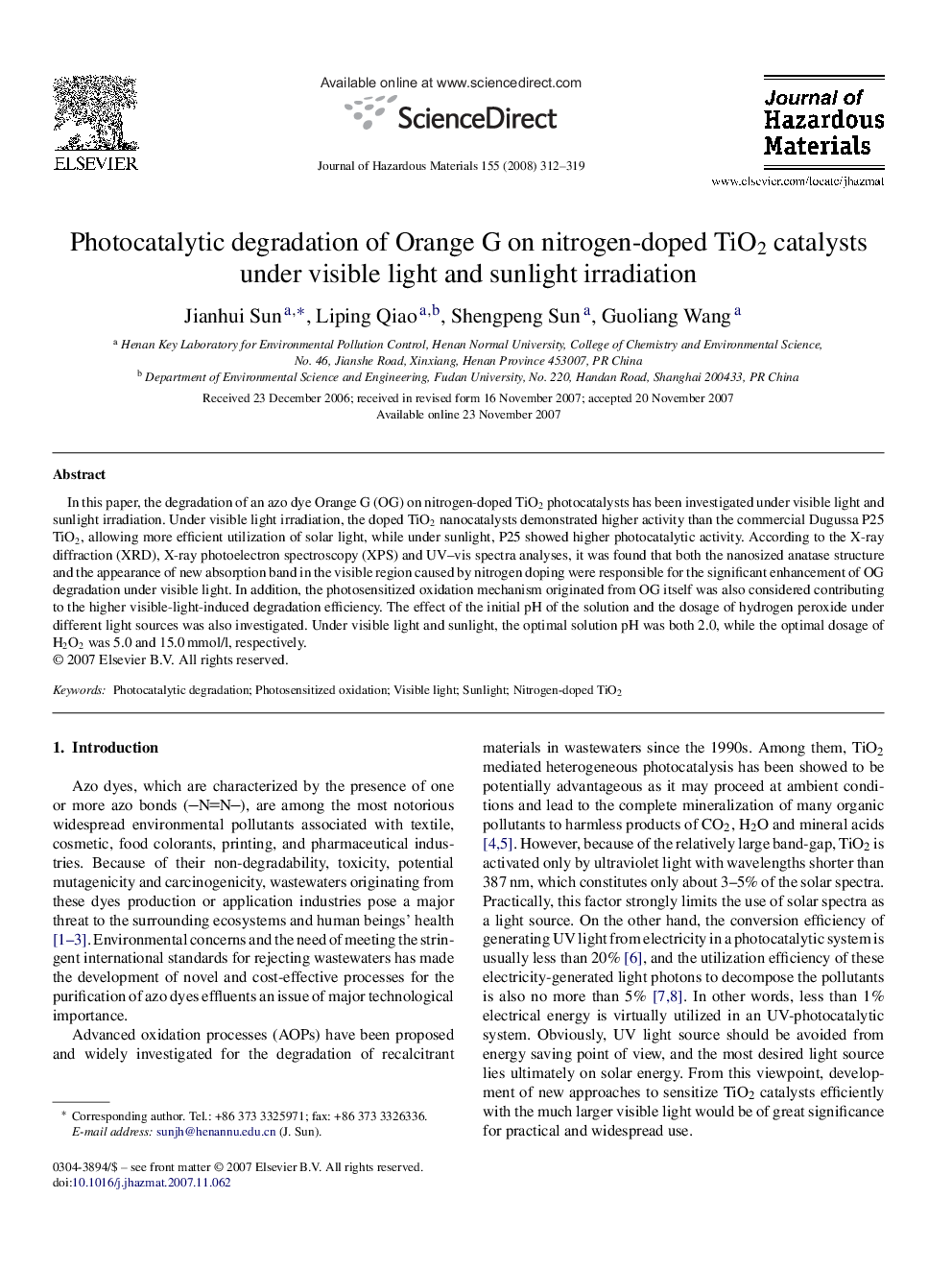| Article ID | Journal | Published Year | Pages | File Type |
|---|---|---|---|---|
| 583432 | Journal of Hazardous Materials | 2008 | 8 Pages |
Abstract
In this paper, the degradation of an azo dye Orange G (OG) on nitrogen-doped TiO2 photocatalysts has been investigated under visible light and sunlight irradiation. Under visible light irradiation, the doped TiO2 nanocatalysts demonstrated higher activity than the commercial Dugussa P25 TiO2, allowing more efficient utilization of solar light, while under sunlight, P25 showed higher photocatalytic activity. According to the X-ray diffraction (XRD), X-ray photoelectron spectroscopy (XPS) and UV-vis spectra analyses, it was found that both the nanosized anatase structure and the appearance of new absorption band in the visible region caused by nitrogen doping were responsible for the significant enhancement of OG degradation under visible light. In addition, the photosensitized oxidation mechanism originated from OG itself was also considered contributing to the higher visible-light-induced degradation efficiency. The effect of the initial pH of the solution and the dosage of hydrogen peroxide under different light sources was also investigated. Under visible light and sunlight, the optimal solution pH was both 2.0, while the optimal dosage of H2O2 was 5.0 and 15.0Â mmol/l, respectively.
Keywords
Related Topics
Physical Sciences and Engineering
Chemical Engineering
Chemical Health and Safety
Authors
Jianhui Sun, Liping Qiao, Shengpeng Sun, Guoliang Wang,
